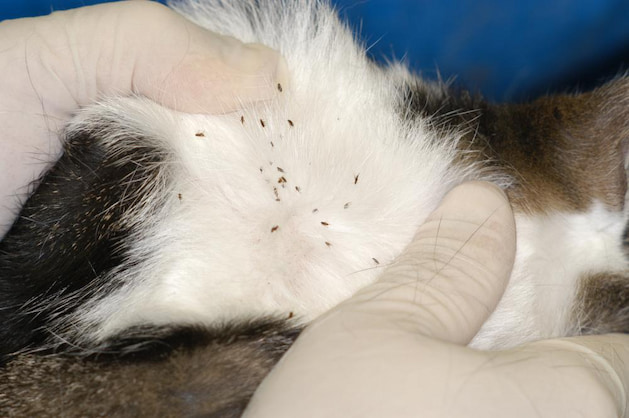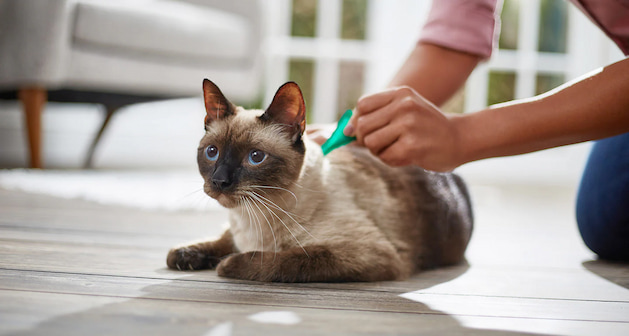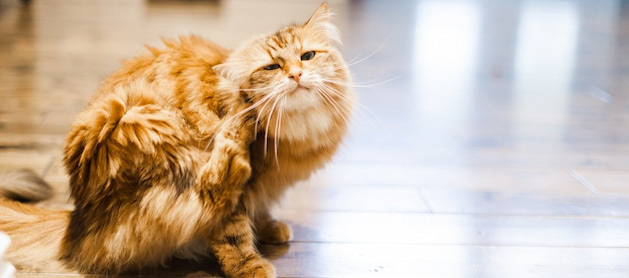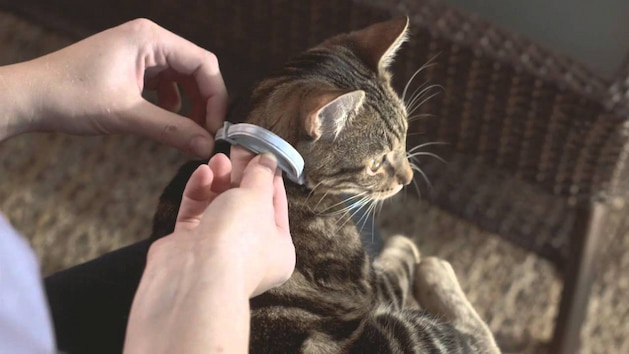Preparing for welcoming a cat into your family means creating a loving, comfortable pet-friendly environment. Taking care of a cat can be an extremely rewarding experience. As cats have the ability to calm your mind and reduce feelings of loneliness and stress, they make great companions. While owning a cat can provide a myriad of health benefits, every devoted cat owner knows that taking care of a cat requires a major commitment.
Just like humans, cats are prone to many diseases throughout their lives. That’s why taking proper care of their health, including mandatory vaccination and regular visits to the vet, is crucial to ensure your feline friend is healthy, comfortable and content. The most common health issue cats face is cat fleas.

But what are cat fleas and which are the signs associated with them? Keep reading this article to find out how you can recognize if your cat has fleas and which ones are the most common flea prevention treatments available.
What Are Cat Fleas?
The most common fleas that feed on cats and dogs is the Ctenocephalides felis. While many cats live with fleas and they show minimal signs of infestation, fleas can be very dangerous. These black specks, commonly called “flea dirt” can be much more than a nuisance. In just a month they can become an infestation of up to 250 000 in your cat fur or home. There are several major signs that show that your cat has fleas.
How To Tell If Your Cat Has Fleas?
Your cat’s warm, furry coat and blood supply is fleas’ favourite home. Itchy skin, constant scratching, excessive grooming, lethargy, and restlessness are one of the most common signs that your cat has fleas.
Luckily, there is a wide range of treatments against fleas, and which one is most suitable for your cat should be recommended by your veterinarian. Among the most common flea treatments are cat flea sprays, powders, spot-on treatments, meds, or in some instances wearing specialized collars.

Flea Treatments for Cats
Sprays
One of the most common spot-on treatments is the highly efficient cat flea treatment spray. Aerosol spray can be problematic for some cats as they become upset by the hissing noise it produces. The cat flea treatment spray protects your furry friend against fleas and ticks in the following month. The treatment should be applied once per month, or every three weeks for protection against paralysis ticks. This product is a safe option to treat puppies and kittens from 2 days old.
Its active ingredient Fipronil helps control the infestation and can be additionally used as part of a treatment strategy for flea allergy dermatitis. (FAD). Once applied, it can break the cycle of the flea with its persistent adulticide activity, ensuring your pet is not re-infested and your home is kept clean and flea-free.
Tablets
Cat fleas can also be treated orally with tablets and liquids. After the absorption, they begin to work after 30 minutes of application and you can literally see fleas falling off your pet’s skin. They are fast-acting and provide immediate relief for your itchy pet.
These tablets provide an effective solution in killing adult fleas and achieve greater than 90% effectiveness within 6 hours for cats after the administration. They are given orally, with or without food, on any day when fleas are seen on the animal and repeated on any subsequent days when fleas are seen. No more than one tablet should be given per day.

Powders
Powders are considered to be a bit old-fashioned and messy. For the treatment to be effective, the powder needs to remain on your cat’s fur which may cause illness if inhaled or swallowed. You don’t need to use a heavy dose, just a light dusting should be enough to rub across the cat’s fur and then stroke it with your hands. For this reason, you should be very mindful of the ingredients and choose products that are organic and won’t harm your pet’s health.
Collars

Collars are a relatively new invention that protects your cat from fleas and ticks. These are not usually very effective as they have a limited range of influence, which is around the neck area. However, there is a new generation of collars that are proved to be much useful and kinder to your pet’s skin and fur and work by dispersing the active ingredient throughout your pet’s body instead of simply staying on your cat’s neck.
These collars protect your kitten or cat from fleas to eight months of age. They work by releasing low doses of killing serum onto the fatty layer of your pet’s skin. You can avoid the hassle of messy monthly treatments by choosing to treat your dog with a collar. Odourless and non-greasy, collars are completely safe, easy to be applied, and can be used alongside ID collars.


